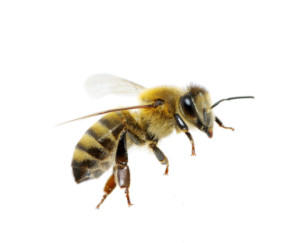 Advanced intelligence has evolved in vastly different types of creatures. Intelligence occurred independently even though these creatures started as small multi cellular organisms and diverged in evolution 500 million years ago. They each used different building blocks, genetic clusters, molecular cascades and signaling. Recent research finds some similarities in brain structures that analyze data across the time and species.
Advanced intelligence has evolved in vastly different types of creatures. Intelligence occurred independently even though these creatures started as small multi cellular organisms and diverged in evolution 500 million years ago. They each used different building blocks, genetic clusters, molecular cascades and signaling. Recent research finds some similarities in brain structures that analyze data across the time and species.
Convergent evolution of many different forms of advanced intelligence means that it cannot have been an accident. In fact, in one lineage that separated from others more than 500 million years ago—molluscs—central nervous systems evolved independently four different times with hundreds of millions years of separation.
Convergent evolution of intelligence can only be explained by evolutionary avenues that increase mental capacities available to all of these creatures. It is consistent with the view that mind in inherent in nature (as a natural aspect along with matter and other forms of energy). Mental activity in the creatures must help move evolution along these lines to higher intelligence through neuroplasticity and specific genetic mechanisms.
 This post will attempt to briefly outline the vast topic of convergent evolution of intelligence by discussing the invertebrate octopus and vertebrate insects, lizards, birds and mammals. All of these creatures diverged hundreds of million years ago—many at the time of the Cambrian explosion more than 500 million years ago. Yet, many eons later they all evolved different forms of advanced intelligence with very different brain structures.
This post will attempt to briefly outline the vast topic of convergent evolution of intelligence by discussing the invertebrate octopus and vertebrate insects, lizards, birds and mammals. All of these creatures diverged hundreds of million years ago—many at the time of the Cambrian explosion more than 500 million years ago. Yet, many eons later they all evolved different forms of advanced intelligence with very different brain structures.
Some of the brains are large and some very small (insects). Perhaps, octopuses are the most remarkable example. These squishy creatures with no bones or spine have completely upended mammal-based theories of intelligence (see previous post). This post will discuss genetic and brain differences and similarities for all these creatures. For details of each creature, please see individual previous posts.
Many Intelligent Creatures
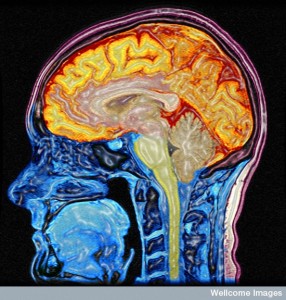 The intelligence of large mammals, such as whales, elephants, dogs, primates and dolphins were assumed to be due to similarities with the large human brain and in particular socializing. Most of these mammals are, also, closely related to humans in evolution, having many genetic and structural similarities.
The intelligence of large mammals, such as whales, elephants, dogs, primates and dolphins were assumed to be due to similarities with the large human brain and in particular socializing. Most of these mammals are, also, closely related to humans in evolution, having many genetic and structural similarities.
Recently, the advanced intelligence of birds has been documented with very different brains and divergence in evolution for hundreds of millions of years since before the time of the dinosaurs. It is surprising to many that lizards, also, show high intelligence and advanced social behavior, completely at odds with the previous notions of human “reptilian brain regions.”
Insects are even further removed from humans in evolution and are now documented to have advanced individual intelligence, including bees, ants and termites (see posts on bees, termites and ants). The insect brain is extremely small and quite different from the others, but recent research shows great similarity in the analysis of motion in the retinas of flies and mammals.
Perhaps, the furthest removed is the octopus (also cuttlefish and squid). A recent post outlined genetic and behavioral analysis of the octopus, which shows advanced intelligence and very unique capacities. The octopus diverged in evolution from all the other intelligent creatures that have bones and vertebrae more than 500 million years ago. Despite completely separate evolution for half a billion years, the octopus, also, arrived at advanced intelligence. It was probably the first highly intelligent creature on Earth.
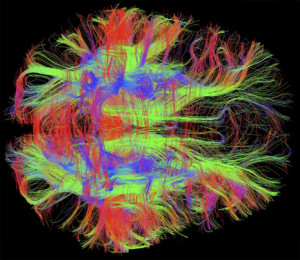 In the human brain, use of the mind builds neuronal connections and circuits through neuroplasticity. Mental activity affects circuits, synapses, genetic networks and molecules to build and prune brain circuits. Therefore, it is reasonable that the intensions and desires of the small evolving creatures influence specific cellular and genetic pathways for increasing brain structures that can receive and utilize more advanced intelligence in the animal. More discussion of mind’s influence is presented after details about octopuses, birds, lizards, insects, dogs and electric fish.
In the human brain, use of the mind builds neuronal connections and circuits through neuroplasticity. Mental activity affects circuits, synapses, genetic networks and molecules to build and prune brain circuits. Therefore, it is reasonable that the intensions and desires of the small evolving creatures influence specific cellular and genetic pathways for increasing brain structures that can receive and utilize more advanced intelligence in the animal. More discussion of mind’s influence is presented after details about octopuses, birds, lizards, insects, dogs and electric fish.
Octopus
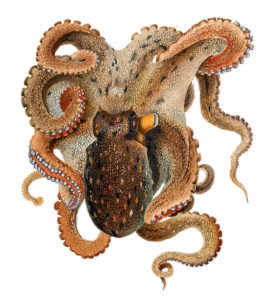 With a separation of 500 million years in evolution, advanced cognitive traits started in the octopus hundreds of million years ago, much earlier than mammals. Octopus ancestors are, perhaps, the first intelligent beings on Earth, appearing before the first fish.
With a separation of 500 million years in evolution, advanced cognitive traits started in the octopus hundreds of million years ago, much earlier than mammals. Octopus ancestors are, perhaps, the first intelligent beings on Earth, appearing before the first fish.
Octopuses learn rapidly, solve advanced problems and mazes and make tools as well as crows. They are very curious and interactive. They spread cultural information, mimic fish and communicate using colors, patterns and flashing. They pick up coconut shell halves and sea shells, carry them along and if threatened flip them over their head to conceal themselves. Covered with two shells, they can see through a small opening slit between the two halves. Their intelligence does not appear to be related to complex social groups (as had been assumptions of intelligence in mammals.)
Since they have no claws or jaws, they defend themselves by changing their appearance with elaborate camouflage based on three unique evolutionary inventions. They can hide in plain sight and can mimic other fish. With their eight arms, they manipulate objects as well as the human hand.
 The octopus brain is relatively larger than reptiles and fish, smaller than mammals and birds. It has 500 million neurons, similar to a dog, six times more than a mouse. The brain is divided into three parts each with a hierarchy. Their Vertical Lobe (VL) is organized like the human hippocampus using a large amount of connections, which converges in fewer outputs to the peduncle controlling movement like the cerebellum. They do not use myelin but rather have very connected hubs near each other and very small neurons that are close together for advanced processing.
The octopus brain is relatively larger than reptiles and fish, smaller than mammals and birds. It has 500 million neurons, similar to a dog, six times more than a mouse. The brain is divided into three parts each with a hierarchy. Their Vertical Lobe (VL) is organized like the human hippocampus using a large amount of connections, which converges in fewer outputs to the peduncle controlling movement like the cerebellum. They do not use myelin but rather have very connected hubs near each other and very small neurons that are close together for advanced processing.
The brain is distributed, with 50 million neurons in the central nervous system, 150 million with their eyes (outside the CNS) and 300 million in eight arms that can think somewhat independently. It looks like a mammal brain with 40 lobes with outer cell bodies (grey matter) and inner axons (white matter). The optic lobe has three cortical layers like the human retina. A region is similar to the human cerebellum with granular-like cells and thin parallel fibers and, also, coordinates movement and eye motor coordination.
 The VL learning center is more specific to memory and learning than mammal centers. Without the VL, everything functions except memory. The VL has two layers with glutamate transmission and then acetylcholine. It has similar neuroplasticity to humans. It has 25 million very small interneurons (most of the CNS) connected with 65,000 very large neurons. The large neurons connect to a region like the human thalamus which filters sensory information. The VL has gyri like human brains to make the surface area greater. Electric properties of VL neurons are surprisingly like mammal brains with cell bodies that are not excited and similar axon and dendrite connections. It uses some similar neurotransmitters and has similar neuroplasticity.
The VL learning center is more specific to memory and learning than mammal centers. Without the VL, everything functions except memory. The VL has two layers with glutamate transmission and then acetylcholine. It has similar neuroplasticity to humans. It has 25 million very small interneurons (most of the CNS) connected with 65,000 very large neurons. The large neurons connect to a region like the human thalamus which filters sensory information. The VL has gyri like human brains to make the surface area greater. Electric properties of VL neurons are surprisingly like mammal brains with cell bodies that are not excited and similar axon and dendrite connections. It uses some similar neurotransmitters and has similar neuroplasticity.
The types of neurotransmitters, cell structure, and membranes are different, but the network hierarchy, wiring and neuroplasticity are somewhat similar.
Octopus Brain Evolution
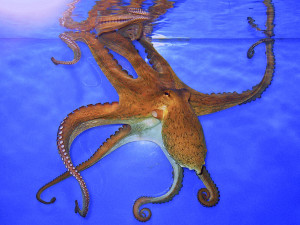
Octopuses have the most genes of any invertebrate (2.7 billion bases) and more protein coding genes (33,000) than humans (20,000). Their genome is unusual and is six times larger than any other invertebrate. Several gene clusters expanded both in octopuses and in humans to build different large intelligent brains. Octopus used the action of jumping genes and alteration of messenger RNA and humans used massive alternative RNA splicing, not gene duplication as was supposed.
Octopuses had a very rapid expansion of critical gene families through the action of jumping genes. A rapid expansion of protocadherin neuronal adhesion molecules (similar but different to humans) allowed the advanced brain development. The way the octopus brain was built emphasized regulating short-range circuits, using the many different new protocadherin genes.This is based on 168 new gene clusters, altered by jumping genes and RNA editing.
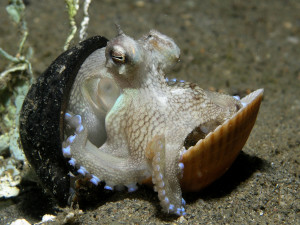
Other expansions occurred in critical genes for neuronal signaling, vesicle signaling, and the unique skin, arms and suckers, jet propulsion system, camera like eyes and three hearts. These occurred through RNA splicing and jumping genes. Recently, it was found that octopuses currently have the most extreme version of RNA editing of any animal and rapidly create new proteins related to adaptation to different ocean temperatures by altering potassium channels. This editing, also, helps adaptation to cold, heat stress and starvation. It allows them to swim in Antarctica.
Camouflage genes (hundreds) are completely new and unique. The system uses photosensitive cells (opsins) in the skin to determine local color, chromatophore changeable sacs with different color pigments, irrdophore light reflectors to create similarity and leucophores to provide white background. Their unique muscles make different textures.
Birds
 Birds and humans are separated by three hundred million years in evolution. Previous posts have documented very advanced intelligence in birds, with the crow, perhaps, the most intelligent. They remember people, cars and incidents for years; have metacognition, counting, use of analogies; understand the Archimedes principle of water displacement; and have the ability to rapidly perform multi step complex puzzles and tasks. They upgrade tools, molding them into a hook and save them for later use. They understand concepts and arithmetic. They have vocal learning and can invent new words. They mourn fallen comrades for days. Some have extremely accurate vision and communicate with gaze and gesture.
Birds and humans are separated by three hundred million years in evolution. Previous posts have documented very advanced intelligence in birds, with the crow, perhaps, the most intelligent. They remember people, cars and incidents for years; have metacognition, counting, use of analogies; understand the Archimedes principle of water displacement; and have the ability to rapidly perform multi step complex puzzles and tasks. They upgrade tools, molding them into a hook and save them for later use. They understand concepts and arithmetic. They have vocal learning and can invent new words. They mourn fallen comrades for days. Some have extremely accurate vision and communicate with gaze and gesture.
Songbirds know sounds, names and syntax and learn specific songs from mentors; they practice them and alter them. Their given name is used their entire life. Whales, dolphins, elephants and other primates can learn new sounds with meaning. Also, elephants, bats, seal lions and seals have some vocal learning. But, songbirds are quite advanced compared to humans. Please see posts on bird intelligence for a full review.
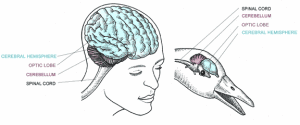 The birdbrain is unique and different from humans. They have a region (DVR) that serves some of the function of the cortex, which has neurons similar to the human cortex. The DVR has cells equivalent to the human cortex layer 4 that inputs data, and layer 5 that outputs data. This arrangement is somewhat better in efficiency to humans. Unlike humans, birds have specialized complex nuclei for vocalization.
The birdbrain is unique and different from humans. They have a region (DVR) that serves some of the function of the cortex, which has neurons similar to the human cortex. The DVR has cells equivalent to the human cortex layer 4 that inputs data, and layer 5 that outputs data. This arrangement is somewhat better in efficiency to humans. Unlike humans, birds have specialized complex nuclei for vocalization.
A dorsal region serves as a neocortex for vision, touch and position (Wulst). Another piriform region is related to smell. Instead of the human cortical six layers, birds have nuclei with less layers and connections. A new birdbrain region, the NCL (nidopallium caudolaterale) is similar to the human pre frontal cortex related to decision making, emotional and social learning and understanding others.
With more layers than other birds and more similarity to humans, owls have exceptional vision. While the use of circuits for vision is different in birds and mammals, color and motion are processed similarly in different structures.
Again, there are different building blocks, cascades, circuits and similar hierarchy and analysis.
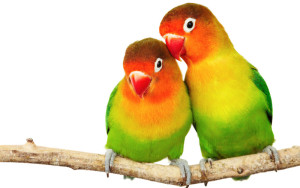 Songbirds, with advanced vocal learning like humans, have columns clustered for hearing, motor and touch. Their stabilization optical system for flying is unique. Pigeon brain regions are the most similar to humans. Songbirds have unique circuits producing different songs. Crows have a much larger more complex NCL than other birds aiding their advanced abstract thought. Special structures are found in parrots (a core and shell for vocal learning) and in pigeons. The crow NCL is more like humans the pigeon more like primates.
Songbirds, with advanced vocal learning like humans, have columns clustered for hearing, motor and touch. Their stabilization optical system for flying is unique. Pigeon brain regions are the most similar to humans. Songbirds have unique circuits producing different songs. Crows have a much larger more complex NCL than other birds aiding their advanced abstract thought. Special structures are found in parrots (a core and shell for vocal learning) and in pigeons. The crow NCL is more like humans the pigeon more like primates.
Unique Genetics of Producing Songs
Epigenetic acetyl tags on histones (protecting DNA) are marked before singing to determine, which genes will be used for a song. Specific regions are used for different tasks involved in the complex process of singing. A large number of different proteins in four nuclei regulate this complex process through these epigenetic tags.
 Neuronal signals activate vast genetic networks that are involved in this complex singing behavior. The genetic tags are present to activate the correct behavior with the exact genes. All of this occurs in an instant. Gene regulation of singing involves thousands of different genes and proteins. The more a bird sings, the more genes are stimulated including thousands of genes making 24,000 different proteins. Before the singing starts, five thousand messenger RNAs trigger 3000 genes in the 4 nuclei. When singing begins, 25,000 different messenger RNA use 1800 genes.
Neuronal signals activate vast genetic networks that are involved in this complex singing behavior. The genetic tags are present to activate the correct behavior with the exact genes. All of this occurs in an instant. Gene regulation of singing involves thousands of different genes and proteins. The more a bird sings, the more genes are stimulated including thousands of genes making 24,000 different proteins. Before the singing starts, five thousand messenger RNAs trigger 3000 genes in the 4 nuclei. When singing begins, 25,000 different messenger RNA use 1800 genes.
Twenty-two genes that are very active in making new neurons for many activities appear critical for different styles of singing. Specific gene clusters are active for particular sounds like phonemes triggered by factors and epigenetic tags.
Lizards
 Lizards are much smarter and more social than previously understood. They show bonding, care of family and other advanced social behavior. They have social learning, play and cooperation. (See post). The have advanced counting, learning and problem solving. They learned even faster than crows in puzzles and invented new techniques not used in the wild. They remembered their techniques for many days. They use multiple strategies and unlearn very rapidly (better than mammals).
Lizards are much smarter and more social than previously understood. They show bonding, care of family and other advanced social behavior. They have social learning, play and cooperation. (See post). The have advanced counting, learning and problem solving. They learned even faster than crows in puzzles and invented new techniques not used in the wild. They remembered their techniques for many days. They use multiple strategies and unlearn very rapidly (better than mammals).
Despite previous outmoded brain theories, the human midbrain (“reptilian brain”) is not associated with reptile awareness. In humans, it is now known that the basal ganglia, along with cortex, amygdala and hippocampus, are involved in unconscious motor learning and are critical to human higher function.
As in birds, recently reptiles have been noted to have two similar cortical layers, layer four for input of data and layer five to output data, but in a region that is more similar to the human’s basal ganglia. Both lizard and bird enters are similar to human cortex, but in totally different places and structures.
Insect Intelligence
 Insects separated in evolution hundreds of millions of years from all the other groups. Although individual intelligence has been demonstrated in a variety of insects, the bee brain is the most studied and perhaps the most advanced.
Insects separated in evolution hundreds of millions of years from all the other groups. Although individual intelligence has been demonstrated in a variety of insects, the bee brain is the most studied and perhaps the most advanced.
With surprising intelligence, insects use their smaller brains more efficiently. Insects have very evolved motor systems, very elaborate social systems, and advanced cognition (numbers, abstractions, focused attention, learning) with tiny brains. Perhaps, big animals need larger brains for control of their large bodies, not cognition. Larger brains do have more details and storage. But, the types of connections might be most important.
A very recent study of the mammal retina and the insect optic lobe shows dramatic similarities in the way that they analyze motion data. They both extract visual information in two parallel pathways (on and off), then correlate this with time dynamics and then the two circuits converge onto four neurons representing four directions. This similar organization occurs despite a 500 million year separation in evolution. Again, different building blocks, similar data analysis structures
Bees
With tiny brains, individual bees have remarkable capacities (see post). They use and understand complex symbolic language, sharing details of locations, angles of the sun, travelling routes, and qualities of locations. They forage for information and count scenes. They understand mazes and abstract concepts (above/below and difference).
Bees self medicate by mixing appropriate medicines and build the most complex efficient honeycomb. The have kaleidoscopic memory for miles and solve the advanced mathematical problem (traveling salesman problem) of the most efficient routes between many different qualities and objects. Individual bees learn from wise elders and understand rewards. They are flexible and communicative with complex social behavior. They have emotions and personalities.
Bees remember short cuts to many different places from the waggle dance without previously knowing the landscape. Bees can abstract information from multiple senses, including many different environmental characteristics, social behavior, location, and the angle of the sun. They rapidly learn from many modalities such as touch, taste, smell and vision.
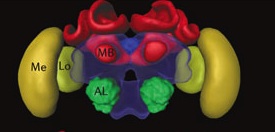 The bee brain has
one million neurons, with forty different types. The mushroom
body (20% of their brain) is the region that integrates multiple senses. It sends value-based
information to other parts of the brain with 100,000 neurons connected to 100
neurons that code multi sensory learned stimuli.
The bee brain has
one million neurons, with forty different types. The mushroom
body (20% of their brain) is the region that integrates multiple senses. It sends value-based
information to other parts of the brain with 100,000 neurons connected to 100
neurons that code multi sensory learned stimuli.
A particular neuron appears to be similar to the dopamine reward center in humans. Bee brains have advanced neuroplasticity for learning and rewards with dendrite changes similar to humans. This occurs in integrated circuits of the olfactory system and very sophisticated visual systems that are far more advanced than humans (kaleidoscopic visual olfactory memory).
Bees use epigenetic tagging of histones (acetylation) and DNA (methylation) for memory. Similar neurochemicals as humans are involved in bees, such as dopamine, serotonin and octopamine.
Termites
 Termites had elaborate societies 200 million years ago—50 million years before ants and bees. They began fungus-farming agriculture long before ants. Individual termites, like ants and bees, are intelligent. As a group, they somehow build an engineering marvel that even humans currently can not (see post on termites).
Termites had elaborate societies 200 million years ago—50 million years before ants and bees. They began fungus-farming agriculture long before ants. Individual termites, like ants and bees, are intelligent. As a group, they somehow build an engineering marvel that even humans currently can not (see post on termites).
The mound structure allows it to breathe (eliminating CO2 and water and taking in oxygen) keeping the society moist (90% humidity) and at the exact temperatures they need to survive. They use solar energy, wind, magnetism positioning and very complex engineering. It is the complex shape of the tunnels that allow the breathing mechanism. It is, also, an oasis helping the environment even more than beavers.
When damaged, they guard the damaged spot and groups of termites repair it exactly as it was before. The comparative size of the mounds in human terms is a very large skyscraper. The nest is a small part of the structure along with rooms for farming. Most of the mound consists of large complex mazes of ducts to maintain the environment.
Ants
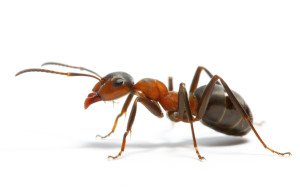 Individual ants are intelligent, not a mysterious “hive” mentality that no one can define (see post). Individual ants are able to learn new ways to navigate and are able to integrate these with multiple other techniques such as number of steps, direction travelled, landmarks, wind, sun angles, visual and smell memories.
Individual ants are intelligent, not a mysterious “hive” mentality that no one can define (see post). Individual ants are able to learn new ways to navigate and are able to integrate these with multiple other techniques such as number of steps, direction travelled, landmarks, wind, sun angles, visual and smell memories.
Ants take direction from others, especially wise elders. Ants take care of their family like mammals. They communicate and make group decisions, led by the smartest in the hive. They will help stuck comrades with great effort and personal risk. They are responsive and flexible in new situations. If the nest is damaged, a group immediately goes to gather materials and others start fixing it. They cooperate and take directions from others in difficult situations.
Dogs
 Recent research shows that dogs and humans have lived symbiotically together since the beginning of Homo sapiens 50,000 years ago. Symbiosis between dogs and humans may be the reason for the homo conquest of Neanderthals in Europe.
Recent research shows that dogs and humans have lived symbiotically together since the beginning of Homo sapiens 50,000 years ago. Symbiosis between dogs and humans may be the reason for the homo conquest of Neanderthals in Europe.
Both humans and dogs are familiar with the same sounds and environments. Dogs understand human emotions—when we are distressed and when we want to play. Recently, researchers were surprised to learn that the same brain center in dogs and humans processes emotions related to the human speech—the non-primary auditory region in the most anterior region near the temporal pole (Brodmann area 38). Dogs can understand hundreds of human words (recently, a dog understood 1000).
Electric Fish, Mammals and Evolutionary Innovation
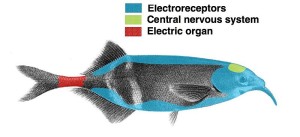
A recent study of electric fish evolution is instructive. When the innovation of use of electricity occurred, fish developed new ways to use electric signals. They needed to evolve larger brain centers for this purpose. Over time, the brains became larger as use occurred of the electric behavior in individuals. Also, as the brains grew, many new species developed that could better sense electrical signals and utilize them in different ways.
This same expansion of the brain is documented for mammals related to smell and tactile sense. Expanded smell and tactile brain centers in a larger brain allowed a tiny mammal to be successful 190 million years ago.
Both demonstrate a bidirectional alteration that occurs, where more analysis of the new types of signals grows the brain and increases the utility of the new sense or signaling information.
Use of New Senses Increases Neurons and Brain
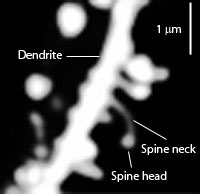 Understanding how the human brain uses experience to model the brain can help explain how a new sense can stimulate more neurons, larger brains and new species. In the human brain, use of particular thought patterns and behaviors actually create new circuits through neuroplasticity and pruning of synapses. This is seen in babies, when there is overgrowth of neurons and then the actual use of mental functions maintains those circuits that are utilized or prunes those that are not.
Understanding how the human brain uses experience to model the brain can help explain how a new sense can stimulate more neurons, larger brains and new species. In the human brain, use of particular thought patterns and behaviors actually create new circuits through neuroplasticity and pruning of synapses. This is seen in babies, when there is overgrowth of neurons and then the actual use of mental functions maintains those circuits that are utilized or prunes those that are not.
In the elderly, neuroplasticity creates many new circuits because of how the mind uses the brain. See the post summarizing recent research in the elderly that shows many new circuits in right-left brain connections and more connections to the frontal lobes for elders that are mentally active. Neuroplasticity changes circuits based on new learning and behavior. This can occur consciously through meditation (see post) or unconsciously through habit learning. This, also, occurs with stem cell therapies where if they are used they survive as a permanent part of the brain.
This same mechanism must operate in evolution, where mental activity influences and builds neurons and circuits. While it is not clear how mental activity can instantaneously affect many different genetic networks throughout a circuit, it does. There are direct effects of mental activity on neurons, organelles, vesicles, and molecules through genetic networks.
Protein Structures Must Have Purpose Because of Complexity
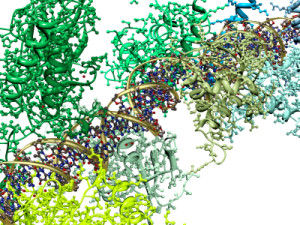 New capacities from neuroplasticity utilize genetic mechanisms making new protein structures. (see post on Fantastic Array of Neuroplasticity Mechanisms.) Expanded gene clusters and completely new types of genes are based on alterations in the coding of DNA or messenger RNA. New and altered genes caused larger brains in evolution. Mental events occurred at the same time causing neuroplasticity. Genetic alterations occurred through jumping gene effects, cellular editing of messenger of RNA, different ways, duplication of genes that are altered, alterations of enhances and suppressors and epigenetic marks on histones or DNA. Mental events and conscious activity alters synapses through changes in proteins.
New capacities from neuroplasticity utilize genetic mechanisms making new protein structures. (see post on Fantastic Array of Neuroplasticity Mechanisms.) Expanded gene clusters and completely new types of genes are based on alterations in the coding of DNA or messenger RNA. New and altered genes caused larger brains in evolution. Mental events occurred at the same time causing neuroplasticity. Genetic alterations occurred through jumping gene effects, cellular editing of messenger of RNA, different ways, duplication of genes that are altered, alterations of enhances and suppressors and epigenetic marks on histones or DNA. Mental events and conscious activity alters synapses through changes in proteins.
All of these mechanisms alter the sequence of amino acids in the proteins. This altered sequence creates a new shape of the protein and hence a new function. (see post on Protein Folding and the Mind) Function occurs through very exact protein shapes that interlock and interact with thousands of other proteins. The slightest difference from the wrong mutation completely changes the shape and function and can cause disease.
But, how can a cell know exactly what shape the protein will become to be able to accurately edit the messenger RNA. This is a particularly difficult question since the folding of a protein is extremely complex. A recent article in Science described how we cannot predict the shape of amino acids and because of the many different 3D shapes of the twenty amino acids used, current science cannot determine how a protein will fold. However, in real life, they fold with the help of other chaperone molecules in a millisecond.
Somehow, the cell knows how the new proteins will fold based on its sophisticated editing of parts of messenger RNAs. Cellular editing must be able to determine what the ultimate folded shape will be and use one of the many genetic mechanisms to alter the sequence in the DNA or RNA.
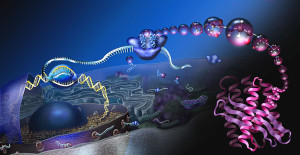 In human brain evolution, alternative RNA splicing has been extensive and critical. This complex orchestrated process picks and chooses sections of messenger RNA to make the protein. How it knows how to do this is not at all clear, but this process built the unique human large brain. In octopuses, jumping genes and editing of RNA made the new genes to build the large brain. In other creatures duplications of gene sections with later alterations were used.
In human brain evolution, alternative RNA splicing has been extensive and critical. This complex orchestrated process picks and chooses sections of messenger RNA to make the protein. How it knows how to do this is not at all clear, but this process built the unique human large brain. In octopuses, jumping genes and editing of RNA made the new genes to build the large brain. In other creatures duplications of gene sections with later alterations were used.
Neuroplasticity Versus New Genes
Based on conscious and unconscious mental activity, brains reorganize themselves with a vast array of different neuroplasticity mechanisms in large brain circuits. This can happen in milliseconds and involves elaborate restructuring and rebuilding of cellular scaffolding, dendrite spines, creation of new circuits, creation of new neurons, and strengthening of the synapses in many ways. These changes augment the expansion of DNA clusters, the incorporation of jumping gene strands, and the editing of messenger RNA to create new proteins.
Convergent Evolution of Intelligence
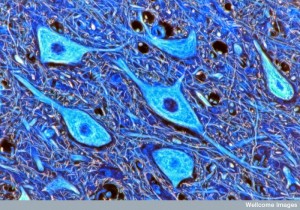 It cannot be an accident for all of these extremely different evolutionary paths to arrive at advanced intelligence after starting with small multi cellular creatures hundreds of millions of years ago. Each evolutionary pathway advanced along a different course, using different building blocks, different expanded genes and different proteins. But, they have some similarities in the organization of the neuronal networks. This implies that specific architectural structures are needed to mediate advanced intelligence—to receive this already available advanced intelligence into the body of the creature.
It cannot be an accident for all of these extremely different evolutionary paths to arrive at advanced intelligence after starting with small multi cellular creatures hundreds of millions of years ago. Each evolutionary pathway advanced along a different course, using different building blocks, different expanded genes and different proteins. But, they have some similarities in the organization of the neuronal networks. This implies that specific architectural structures are needed to mediate advanced intelligence—to receive this already available advanced intelligence into the body of the creature.
Clearly, the mind of the creatures has had influence in these processes, just as it does now in human brains with the constantly changing brain neuroplasticity.
How can any reasonable person think that advanced intelligence can just appear many times in different evolution lines without mind being an integral aspect of nature in every creature as it evolves?
